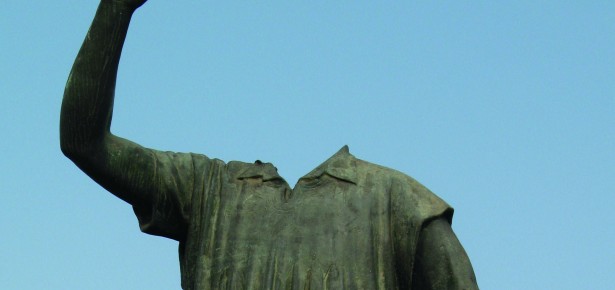
Below, we republish an edited extract from Ciraj Rassool’s chapter ‘Human Remains, the Disciplines of the Dead, and the South African Memorial Complex’.
The challenge of rethinking colonial categories was part of the remaking of museums in South Africa as part of the reconstitution of heritage. Questions began to be posed about the future of the ethnographic museum (or of ethnography in the natural history museum) in a new democracy. Although the record is uneven across national, provincial, and local museums, one of the routes to museum renovation has been the unification and potential integration of previously segregated collections of cultural history and anthropology in a new collections division of social history, like that which occurred at Iziko Museums of Cape Town. The controversial diorama of a nineteenth-century San Camp made in 1959–60 out of painted body casts, and on display since then, was shut by the South African Museum in 2001, after the museum had been incorporated into a Smithsonian-like flagship museum called Iziko Museums of Cape Town. In essence, the diorama was ‘archived’ while its future was decided upon. The casts, produced as racial studies in the early twentieth century, had been placed in an invented scene of cultural anthropology, where, as ‘the diorama’, it had been subjected to criticism by scholars, and become the subject of intense debate and contestation through the exhibition ‘Miscast’ in 1996.
Moreover, beyond the presence of body casts in the collection, as artefacts of anthropometric study and racial science – which had somehow been little questioned – more challenges were posed around settling the future of human remains collections in a reconstituted national museum. Here they remained under the purview of science, but sat uncomfortably between archaeology, social history, and natural history in their separate storage space as ‘sensitive collections’ in a manner that ‘show[ed] respect for the dead, and accord[ed] with the wishes of descendant communities’. After 2005, they became subject to an approved management policy, which included oversight by an advisory committee comprising members drawn from ‘descendant communities, scientific communities, and other concerned groups’ as stakeholders. The advisory committee would ‘guide Iziko in making decisions regarding the management of human remains in its collections’.
…
Five years before this policy had been made, ‘in the absence of national policy guidelines’, pressure had begun to mount through the publication of a book I wrote in 2000 with a colleague, Martin Legassick, Skeletons in the Cupboard, in which we revealed how significant numbers of skeletons had entered the South African Museum and McGregor Museum at the beginning of the twentieth century through unethical deals with gravediggers and body traders who dealt in ‘freshly dead corpses’. South African museums also competed with scientists in Britain and elsewhere in Europe for access to the bushman body for the purposes of racial research. Previously, South African scientists sent skeletons to Britain for analysis, and Europeans like the Austrian anthropologist, Rudolf Pöch, undertook field excursions across Southern Africa. In these circumstances, the Bushman Relics Act was passed in 1911, seeking to prohibit the export of rock art as well as Khoesan human remains. At this time, when the institutions of the new nation of the Union of South Africa were being established, the Bushman Relics Act became the original document of South Africa’s law on heritage. And, as part of the South Africanisation of science, anatomists and museums in South Africa began to lay claim to their own collections of skeletons, casts, and other biological data about the Bushmen as primitive type. And, as Legassick and I argued, human remains, including those ‘unethically collected’, were central to the origins of the modern museum in South Africa.
Skeletons in the Cupboard put forward an understanding of the history of colonial collecting and museum anthropology as violent and appropriative. South African museums have been reluctant to address these aspects of their history, choosing rather to portray the museum as benevolent, and to produce exhibitions about Khoesan material culture by rendering Khoesan people as ‘harmless’ and in need of salvation, without any fundamental epistemological reassessment of the blood of colonial history. This is a stewardship model of the museum, whose benevolence exists within a genealogy of paternalism and atonement through which heritage is understood as the magnanimous recovery and salvation of lost pasts of indigenous people.
For more like this see the full volume contents at:
Latest Comments
Have your say!